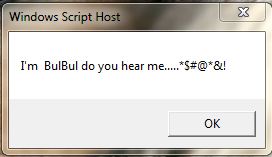Delete the folder after uninstall
Hi,
I have this application called McAfee and I did silent install with Setup.exe /q command but when I uninstall it leave the folder under program files and there are bunch on things under that folder. Please advice what to do in this case. I didn't created the msi.All I did was silent install.
Thanks in Advance.
I have this application called McAfee and I did silent install with Setup.exe /q command but when I uninstall it leave the folder under program files and there are bunch on things under that folder. Please advice what to do in this case. I didn't created the msi.All I did was silent install.
Thanks in Advance.
0 Comments
[ + ] Show comments
Answers (9)
Please log in to answer
Posted by:
syn
14 years ago
Posted by:
PackageExpert
14 years ago
Posted by:
airwolf
14 years ago
I've written an AutoIt script to scrub McAfee installations from Windows clients, as the standard uninstallation leaves quite a bit of residual data lying around. However, the application I wrote has not been updated for AV 8.7i - it was written in the days of the ePO Agent version 3.5, AV 8.5i, AS 8.5i, and HIPS 6.1.
Also, as syn pointed out, this is a side-effect of most application installations in Windows.
Also, as syn pointed out, this is a side-effect of most application installations in Windows.
Posted by:
anonymous_9363
14 years ago
Welcome to the world of Microsoft Windows where every program you uninstall will have program files left behind.More correctly, welcome to the world of Microsoft Windows where vendors (including Microsoft) ignore Microsoft's advice to NOT place data files in the application's folder structure.
Forget script, be that VBS, AutoIt or whatever. Create a transform for the MSI and populate the 'RemoveFile' table which was provided for this very purpose. Be sure to use the option to have the files removed on uninstall only.
Posted by:
airwolf
14 years ago
Posted by:
anonymous_9363
14 years ago
Posted by:
airwolf
14 years ago
That is, if the McAfee installer allows modifications to the msi. McAfee AntiVirus uses a custom setup.exe to call the MSI with custom parameters. You can't install with the MSI alone, and good luck getting McAfee to support using a modified MSI. Neither method - scripting or MSI modification - is any more accurate at file and registry removal. However, scripting after the uninstallation doesn't allow support to say "you shouldn't use your own custom MSI, uninstall and reinstall using SetupVSE.exe".
Posted by:
pjgeutjens
14 years ago
McAfee AntiVirus uses a custom setup.exe to call the MSI with custom parameters. You can't install with the MSI alone
this to me smells like a job for the ISSETUPDRIVEN property. Or looking through the custom actions.
In principle though, for these kinds of packages I'd tend to agree with you and try to use the delivered Setup.exe from McAfee.
PJ
Posted by:
bulbul
14 years ago
 Rating comments in this legacy AppDeploy message board thread won't reorder them,
Rating comments in this legacy AppDeploy message board thread won't reorder them,so that the conversation will remain readable.






